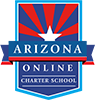Ask most kids, “When does one year end and another begin?” and they’ll probably tell you that the year begins in July or August, ends in May, with a chunk of summer between the end of one year and the beginning of the next.
Kids are way more aware of the school year than they are the calendar year, so it may be difficult to convey the significance of the December 31 transition from one year to the next.
Coincidentally, the new calendar year begins right in the middle of the academic year, so it’s a perfect time for parents to help students evaluate the first half of the school year so they can regroup, rededicate themselves and prepare for the second half. It’s also an ideal time to teach kids about making—and sticking to—new year’s resolutions.
Here’s how you can help your student get a good start on the second half of the school year:
- Look back at the first half– Parents and children should reflect on the first half of the year and make a list of everything that went right and everything that went not-so-right. Analyze the elements that were involved in successful outcomes, so they can be used to create future strategies. Then, analyze the elements involved when things went wrong and how those factors can be avoided in the future.
- Have a meaningful discussion about school – Find out what your student likes and doesn’t like about school. Discuss the academic, social, and behavioral aspects of school. What subjects are difficult? How does your student get along with classmates? If your child has suddenly started acting up in class—or has suddenly become apathetic—discuss the reasons for this change in behavior.
- Set new goals – Did you and your student set goals at the start of the school year? Did they achieve those goals? Create a new set of goals for the second half of the year. If your student set a goal of getting an “A” in math, but received a “D,” set a new goal of getting a “C” in the third quarter and a “B” in the fourth. Treat mid-year as a new beginning.
- Review organizational and study skills – Sometimes, the problems a child has can simply be lack of organization. Being unorganized can waste valuable time and can get students confused. Help your child organize their school supplies, then show them how to create a meaningful to-do list. Also review good study skills to ensure that your child always completes their homework and is prepared for tests.
Going hand-in-hand with starting the second half of the school year is learning to make resolutions for the new calendar year. Did you help your child make resolutions last year? How many did they keep? Making resolutions for the new year is a self-improvement strategy that can be employed throughout one’s life, and it’s never too early to start.
There are many suggestions for teaching kids how to make and keep resolutions. Possibly the most realistic and easiest to remember is the SMART goals method, an acronym for the steps necessary for successful resolution/goal setting.
New year’s resolutions should be:
- Specific – Often, children make resolutions that are very broad. “I’m going to spend more time on homework” is too vague; “I’m going to spend two hours each night on homework” is something that is …
- Measurable – If your child sets two hours per night for homework, it’s very easy to determine if that goal has been met. If it’s 9 p.m., and your student has been watching TV since 6 p.m., it’s clear they haven’t met their goal. Maybe the goal of two hours wasn’t …
- Achievable – There’s no point in setting goals that are unattainable. If your child’s goal is to graduate 8th grade by the age of 10, but they’re a solid “C” student, their goal will probably go unrealized. If your child can’t sit still, then maybe a two-hour stretch of studying is too long. Maybe studying in eight 15-minute increments makes more sense because resolutions/goals only work if they’re …
- Realistic/Relevant – Resolutions/goals should be relevant to your child’s life and should be realistic. It’s nice that a 5th grader’s goal is to be the first human on Mars, but perhaps making a resolution to get a “B” in English is more realistic and more relevant to their current situation. And goals are only relevant if they’re …
- Time-Based – Resolutions and goals should never be open-ended. Goals with an end date are measurable. Raising one’s math grade from a “C” to a “B” is a worthy goal if it’s going to happen by the end of the next quarter. If the timeframe isn’t included, the goal becomes meaningless.
Parents should communicate with teachers to see that students get a good start on the second half of the school year. It’s not difficult to turn bad grades into good grades in the two quarters remaining. It simply takes all the players—parents, teachers, and students—working together to create a workable, achievable plan for a successful third and fourth quarter of school.


